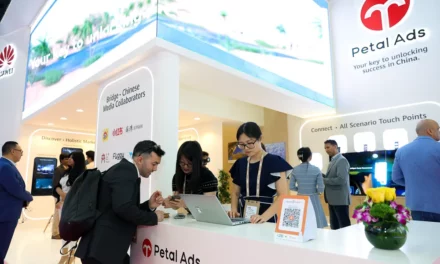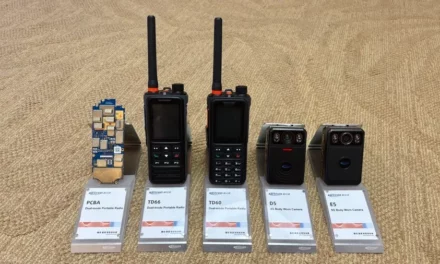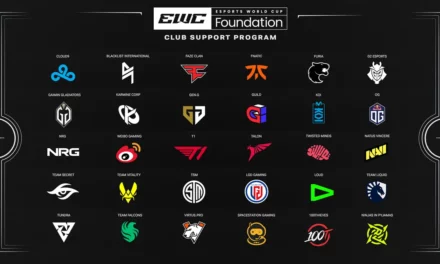
The Future of Loyalty in RetailIn association with Future Agenda, the global open foresight programme.

The Future of Loyalty in RetailIn association with Future Agenda, the global open foresight programme.
The future of retail holds many unanswered questions: will the high street win out? Is it all about speed of fulfilment? Will technology take over from the traditional sales assistant? The future of retail loyalty however, is somewhat clearer.
Retail loyalty solutions have traditionally been about transactions. As consumer demands evolve, the same solutions need to adapt to allow retailers to forge deeper emotional connections that keep customers coming back to your store time and time again.
As our report demonstrates, the future of loyalty in retail presents huge opportunities for driving devoted relationships between brands and consumers. From mobile momentum and multi-channel engagement to different ways of using data to understand digital footprints, this report explores how you can secure repeat purchase and advocacy by understanding not just what your customers will buy next, but rather what will motivate them to make that purchase with you.
For ICLP and our clients, the future of loyalty in retail is entrenched in the ability to understand and engage each customer as an individual – I hope you’ll agree it’s an exciting challenge – Mignon Buckingham, Managing Director, ICLP.
The composite customer
We will see an increasing number of retailers leveraging their ability to penetrate social groups, gathering feedback and insight in order to provide products and services that meet the demands of those groups. Not so much mass-personalisation as small group loyalty experiences.
As the ease with which consumers communicate with each other using flexible digital identities grows and the way purchasing decisions are made continues to change, we will increasingly see brands focus their loyalty initiatives not just on individuals, but on groups of friends, couples or families.
The idea that customers can be defined through their relationships and the things they like – i.e. ‘composites’ of a number of different personae – has gained ground as social media platforms have enabled brands to easily map these personae for insight purposes.
Over the next ten years, we will see even more information shared socially, and the rewards customers value most will increasingly emphasise shared experiences, rather than individual incentives. This trend will be even more prominent in countries such as China and America, which are perceived to be ‘collective cultures’.
Data and relationships
This shift will require brands to sharpen their capabilities in data. As the most resourceful retail brands get better at harnessing data, and more iterative in their marketing, they will use multiple sets of data – including ‘relationships’ – in order to better understand and predict customer behaviour. For retailers, this will mean taking the opportunity to translate transactional information into something actionable and relevant to the consumer.
These insights will be particularly relevant to the future of loyalty. If shared experiences are what matter most to the customers of the future, retailers will need to understand not only the customer, but the interests of their nearest and dearest too.
Inspiration
Social rewards don’t break the bank
When it launched in the UK in 2015, Germany’s Fidor Bank announced that it would increase the interest it pays on savings in line with likes to its Facebook page. Starting from a 0.25 percent base, the bank announced every 2,000 likes on its Facebook page would lead to a 0.05 percent increase in the rate, up to a maximum of 0.5 percent. The bank also runs a community forum where it shares new product ideas with consumers and rewards them for their involvement.
Key Insights
Segmenting people by age or gender will become less effective. Instead brands should cater to their customers based on their shared interests and their involvement in groups and communities
Consumers will use a variety of digital personas across multiple online communities. Building a picture of the composite customer is only possible with strong data analytics capabilities.
Multi-Channel Customer EngagementThe future of loyalty lies in a retailer’s ability to place the consumer at the heart of their business model. Retail brands need to ensure that everything they do is geared towards – and informed by – the needs, desires, interests and behaviours of their audience. Failure to do so will leave traditional players exposed and at the mercy of more agile competitors.
Today’s customers demand relevant, real-time engagement and instant gratification; they want more choice that is relevant and tailored to them specifically. With mobile commerce alone expected to account for nearly half of all B2C e-commerce spending by 2019, retailers urgently need to think about every possible interaction they may have with their customers in this mobile world.
It is no great surprise that some of retail’s most disruptive brands have emerged in the mobile commerce arena with very customer-centric models. While Amazon and eBay are leading the pack in the West, Souq.com is also seeing significant growth in m-commerce in the Middle East. The region’s largest online retailer has reported doubling their previous year’s sales records, achieving over ten times the average daily sales on the first day of the holiday period, 40 percent of which came from their mobile application.
India’s largest m-commerce player, Flipkart now attributes a staggering 70% of its sales to mobile. Meanwhile in China, JD.com, owner of social media platform Tencent, expects mobile revenues to top $15bn in 2015.
Share of screen
The customer experience in the future, therefore will be about ‘share of screen’ as well as share of wallet. For retailers, the challenge is to ensure that they are front of mind for their customers, and that they stay there. This will only be the case if those customers are rewarded and recognised for their interactions with a brand. Consumers who feel engaged with the brand will be those that have identified a clear value exchange, and received relevant and personalised experiences across all channels.
Customer engagement requires brands to think differently about what they do in many respects – from deciding which channels they will sell through or have a presence on, to how they articulate their ‘brand personality’ across those channels. Retailers with bricks and mortar stores have the opportunity to create shopping experiences that appeal to customers across multiple dimensions. Through the presence of shop assistants, developments in in-store technology and the traditional ‘touch and feel’ experience they have the ability to build a level of familiarity with consumers that pure play ecommerce brands can only dream of.
However, as they expand across multiple channels, keeping that familiarity consistent becomes a significant challenge. With mass affluents owning an average of five devices including smartphones (85%), laptop computers (82%), desktop computers (73%) tablets (68%) and smart watches (25%) according to Collinson Group research, consistent brand experiences could not be more important.
The wide breadth of devices and channels consumers are using to make purchases today also raises the question, to app or not to app? With over 1.5m apps in existence, but 79% of time being spent on just five of them, retailers who are investing in applications need to ensure that they are being integrated holistically with their wider customer management and engagement strategies.
InspirationShukran, Landmark Group’s loyalty programme is the largest in the Middle East. The programme boasts 15 million members across seven countries, covering 1,500 stores and over 50 brands. Shukran strives to create a simple and convenient shopping experience for their customers and the latest version of their mobile application ensures members never miss out on rewards by allowing them to redeem card and discount coupons within the app.
Key insights
Retailers without a comprehensive mobile communications and engagement strategy will be rapidly left behind as consumers increasingly rely on smartphones for all aspects of their lives
Retail brands must be willing to engage their customers in a transparent, real-time conversation, listening and responding in order to meet their needs
Consumers are shopping across multiple platforms and devices and brands need to continue to invest in implementing multichannel loyalty strategies that deliver personalised and consistent experiences across them all.
Curating Conversations and Inspiring Advocates
Brands are rapidly running out of waking hours in which they can talk to their customers. Industry data suggests that on average, people spend over 490 minutes a day consuming some form of media. Digital media (including social) is experiencing the fastest growth and forecasters expect this figure will increase to 506 minutes – nearly eight and a half hours – by 2017.
In this environment, all media engagement will become an increasingly zero-sum game, with engagements on one platform likely to come at the expense of others elsewhere. This will lead to big shifts in how retailers make use of channels and social media in particular.
One likely impact will be the way in which brands use social in concert with other channels – driven by a need to engage consumers, and a desire to make them advocates rather than purely delivering a service experience.
In practice, new forms of brand interactions that allow customers to become public advocates will be discovered, while the use of existing ones will be amplified further. Current examples of this includes co-creation – where communities provide insight and feedback on new products and services; another is peer-to-peer reviews – where customers recommend products and services directly to each other and brands take a back seat.
The need for brands to regard their social media channels as customer service channels is now imperative with increasing numbers of consumers resorting to social media to both complain about or commend a company. Retailers need to review organisational structures, processes and resources to support this trend, which essentially aligns customer service departments much more significantly than in the past.
There is also great potential in brand tagging. This practice rewards consumers for allowing brands to tag them doing a certain activity, for example checking into a location or posting a photo with a certain product. This subtle engagement gives brands a chance to be part of the daily conversations their customers have with their friends. They can drive emotional connections with them, being included in their lives without being too intrusive in the process.
All of this will involve brands ceding even greater control to consumers – or, at least, appearing to do so. This shift from direction and control towards the serendipitous allows brands to learn more about customer behaviour. There is significant potential in connecting social data, customer profiles and preferences with transactional data to produce richer customer insight. This, in turn, allows brands to better gauge the commercial value of their customers and their loyalty with data that can be used to increase advocacy and inform future models of customer products, services and communications.
Inspiration:
ASOS invests in user-generated content
Online retailer, ASOS has created online channel ‘As Seen on Me’ to link customer generated visual content to ecommerce. The pure play retailer is using visual commerce platforms to aggregate pictures of customers wearing their clothes and featuring them on the buying pages of those individual items. Combining user generated content with e-commerce allows ASOS to provide a human and rich media experience for consumers while also demonstrating a sense of community and building advocacy.
Key Insights:
The always-on culture is reaching saturation point, so retailers will have to think carefully about how to use social media to engage with customers in a relevant way which also makes commercial sense for their business
Brands can empower their customer communities to provide support and advice to other users, creating an emotional connection, and powerful feeling of a collective movement
Retailers need to gear up their social media channels to be more effective customer service channels, tracking customer satisfaction in much the same way as on other channels.
The Voice of Millennials
With 73 percent of Millennials reporting that they make purchases directly on their smartphones, it’s no surprise that a great deal of emphasis has been placed on the technological and media savviness of Millennials or ‘Generation Y’ in the retail press.
Research from Deloitte shows that 47 percent of Millennial consumers use social media during their shopping journey, compared to just 19 percent of non-Millennials. They are also more likely to blend on and offline services and experiences, and spend more due to their use of digital.
However, despite being among the earliest of adopters, there is growing evidence that this age group is emerging as the most cost-conscious generation. This is perhaps unsurprising given that they have come of age at a time of major uncertainty while the global recession of 2008-10 was in full force.
As well as being more cost-conscious, Millennials are also more concerned with a brand’s values, corporate sustainability and responsibility than their parents and elder siblings, who are chiefly concerned with product-level issues like reliability and customer service. Millennials gravitate to brands that demonstrate an authentic voice and show support for causes they share.
This outlook prompts big questions around the prominence that brands should accord to ‘giving back’ – both in terms of their corporate behaviour and also their operations. The opportunity to engage Millennials with initiatives that resonate with their passions is there – whether that’s through reducing the carbon footprint associated with the delivery of purchases, or adding the opportunity to make charitable donations at checkout.
This insistence on authenticity should not be overlooked. Retail brands need to consider how they create relevant initiatives that are built around the lifestyles and values of future generations, capturing their loyalty at a younger age, and securing it for life.
Inspiration:
Largest airline in the Middle East and fourth largest in the world, Emirates, allows Skywards Miles to be donated to the Emirates Airline Foundation. Skywards Miles can be used to sponsor travel for doctors, surgeons, engineers and other professionals who are travelling in order to volunteer on humanitarian missions around the world.
Key insights:
Millennials are born digital and consequently place a high value on digital interactions with retail brands
The extent to which rewards are personalised and made relevant, and the way in which they are delivered matters as much as the content of the rewards themselves. Millennials are cost-conscious having grown up through the global financial crisis, but their purchase decisions will continue to be heavily influenced by peers and motivated by wanting to share positive news and garner popularity from social groups
Millennials gravitate to brands that share their world-view, and are very interested in how retailers act and position themselves.
Loyal employees drive loyal customers
There is growing evidence of a measurable relationship between employee engagement and retailer success. Engaged employees are more likely to excel in customer service by going the extra mile, and even non-customer facing employees are more likely to have a higher interest in developing and delivering products and services that meet their customer’s needs. So employees throughout an organisation have a significant impact on customer loyalty. In Figure 1’s engagement-profit chain, Kevin Kruse illustrates the relationship between employee engagement, loyalty, productivity and business performance.
How are retailers to reconcile the obvious performance benefits of an engaged workforce with the compelling economic case for increased automation and the onward march of digitisation? Though much has been made of technology’s role in the commoditisation of work, there is little evidence thus far to suggest that retail organisations would sacrifice the human aspect of customer service in favour of automation. The digitisation of work, along with the arrival of Millennials in the workforce, has in fact prompted many companies to place an even greater emphasis on the contribution of human capital.
The distinct lines between employees, customers and the world at large are blurring. Legacy retailers with bricks and mortar operations and ‘boots on the ground’ will have the wherewithal to adapt to these changes most effectively.
Human engagement
Through their employees, brick and mortar retail brands therefore have the greatest opportunity to directly engage with consumers, building empathy and connecting on an emotional level – something that pure play retailers will find it more difficult to achieve.
Retailers can empower their employees, making data on past purchases and preferences available to sales assistants in order to help them enhance customer experiences and connect with individuals. The effect employees can have in sharing information and influencing their friends and family should also not be underestimated. These trusted interactions, where people value word of mouth over other forms of communication will see the future of loyalty being driven at a human level.
Loyalty in the second half of this decade is sure to have a human face, yet the information that underpins customer interactions will be much more informed and drawn from analytics and computerised data in a huge variety of forms.
Inspiration
Harrods might be one of the UK’s best-known department stores, but it faces the same employee engagement challenges as any other retailer. Since being purchased by Qatar Holdings in 2010, this has been a core area of focus for the business and 91% of employees now state that they are proud to work for the retailer. The employee turnover has also halved. Internal magazines, morning briefings and schemes that encourage employees to share their ideas are just some of the techniques that Harrods use to connect with their employees and keep them engaged.
Key insights
Retailers will have to adapt and work harder to engage employees and drive their loyalty and passion to the company, particularly amongst Millennials
Employees can become deeply invested in the companies they work for, even if they do not stay for years. Work is no longer just a means to an end, so retail businesses must strongly curate and promote their company culture and align it with their loyalty strategy
Employers should strive to build empathy and create opportunities to connect with employees on an emotional level to enhance brand advocacy.
Mobile Momentum
While the trade-off between personalisation and privacy will continue to be rocky territory for retail brands for several years to come, the opportunities around new forms of payment – especially mobile payments – do appear to offer a genuine win-win for retailers and consumers alike.
Accenture’s North American Digital Payments Survey 2015 highlights just how closely consumers equate mobile payments with loyalty and reward. Overall, 78 percent of those who already use mobile payments agreed they would do so more if they received reward points while among non-users, coupons, points and other rewards would incentivise them to adopt m-commerce (Figure 2).
It’s not hard to see why rewards and mobile commerce are so closely linked. More and more retail brands are building loyalty and reward capabilities into their mobile apps and digital platforms. At the same time, in-app payments are increasingly being used as a means of payment in-store, meaning consumers can side-step the queue for the till.
The immediacy and ease of use of mobile payments, alongside the enhanced role of the mobile device in day to day life, means consumers are far more likely to redeem points and respond to offers at the point of sale, leading to increased return visits and greater brand loyalty overall.
Loyalty currency will be increasingly used as virtual currency, allowing consumers to use points to pay for a wide range of goods and services. Customers will associate these transactions made at point-of-sale on loyalty cards with the brand issuing the card, further enhancing customer affinity.
Inspiration
Beat the queues, earn rewards
Coffee chain Starbucks’ app is a textbook example of a retail brand combining m-commerce, payments and loyalty to unlock considerable business value. The app accounts for over a fifth of all transactions and boasts some 16m customers, who earn points with every transaction, can pre-order and, most recently, pay in Bitcoin.
Key insights
Mobile payments, coupled with loyalty programme apps, provide the opportunity to deliver value added benefits to customers through a differentiated and valued customer experience
Mobile payments can speed up the transaction process saving customers time, offering convenience and making it easier for them to do business with a brand, which in-turn drives loyal behaviour.
Creating relevant relationships
Key factors that arose in the Future Agenda programme as the strongest drivers of future loyalty are trust, value for money and quality products and services. But points, coalition rewards, premium services and added value benefits, remain the key mechanics and strategies that encourage repurchase and brand preference.
Collinson Group research found that globally, since 2014 there has been little change in the number of mass affluents who are members of loyalty schemes across supermarkets/grocery stores (-6%) and retailers (-7%). However, retailers need to ensure that they are reconfiguring loyalty schemes to ensure those figures increase in future.
As digital technologies have disrupted business models across retail, so the approach by which loyalty is recognised and rewarded also needs to evolve. Central to this is the realisation that a rewards offering that might resonate with one consumer, may be utterly uninspiring to somebody else with a similar profile. Retailers need to offer rewards and redemption options that are relevant, attractive and aspirational to their particular customer segments.
Collinson Group found that discounts on future purchases, free delivery to a place of choice on a named day and collecting points against future purchases were the key offerings that would encourage mass affluents to spend more and shop more frequently. However, other more innovative elements such as real-time and location based offers, staff knowing their names, special VIP events and money-can’t-buy-experiences were also cited as incentives. Retailers need to explore ways in which they can evolve their strategies to incorporate elements of surprise and delight that add intrinsic value to a customer, over and above traditional points and rewards.
Inspiration
Al Tayer’s Amber programme is the Middle East’s largest multi-sector loyalty programme, covering luxury, mid-scale brands across retail, hospitality and motoring. The programme offers members exclusive invitations, outstanding offers and complimentary services such as priority alterations, jewellery polishing and watch repair, over and above the usual rewards and benefits.
Key insights
Loyalty programmes need to become more dynamic, in terms of the following:
Consumer-led – customers will expect retail brands to crowdsource ideas for rewards programmes – or be seen to act on real customer input in other ways, for programmes to generate traction, drive greater engagement and loyalty
Real-time and instant – people get frustrated when missing out on great offers – or, in the case of Millennials, not being part of that lucky group. Retailers need to address these impulses by offering more rewards that exist only for a limited period; and show consumers if their friends or communities are also interested in the same things
Based on emotional connections – digital and social channels enable retail to gain deeper insight about their customers – and trends in their behaviour like never before. Retailers need to be ready to respond to opportunities that emerge from one moment to the next, to engage consumers, recognising that experiences rather than objects, tend to resonate more deeply with people
Providing convenience – we have seen how loyalty can be engendered by simply making people’s lives a little easier. From mobile payments and queue-jumping to partnering with ‘convenience’ brands offering anything from transportation to free deliveries, there are many ways retail businesses can offer convenience without significantly eroding their margins.
The Shifting Value Exchange
Loyalty has always been about creating a positive exchange of value between brands and consumers. Loyalty has the power to move beyond the rational and transactional nature of a purchase to encourage a more emotional connection with a brand.
While a deeper emotional connection will be the objective of many retail businesses, understanding the broader concept of value will be the challenge and the opportunity in the future.
This leads us to question; at what price can a customer’s loyalty be secured? For the past two decades or so, one approach has been to address this largely in economic terms with loyalty currency being awarded to customers based on their transactional frequency and spend.
With competition increasing and consumers becoming ever more inclined to shop around for the best price, some retailers are being forced to adapt their loyalty schemes in order to keep them profitable, if not retire them all together, risking disappointment and loss of good will amongst existing customers.
Shoppers who are part of UK supermarket, Sainsbury’s Nectar scheme for example, will now have to spend twice as much in store to earn the same level of points. This leaves the supermarket giant at risk of losing customers as they opt to shop around, choosing convenience and the opportunity to save money over loyalty to one particular retailer.
The value of rewards
The provision of pure cash back to encourage greater spend may not be the most effective value exchange as it risks reducing the relationship between retail brand and customer to a zero-sum economic game. Providing customers with wider redemption opportunities that convey an understanding of the customer – from discount vouchers to experiences – could address both the costs that retailers face in order to offer such rewards, and the expectation of customers seeking greater choice in rewards. Research from the Collinson Group shows that customers differ in what they believe is of value to them, and appealing to these differences recognises the highly personalised nature of loyalty in the future.
Furthermore, Collinson Group’s Mass Affluent research shows that consumers in higher income brackets attach considerable value to family and the future (Figure 4). By comparison, interest in material goods is comparatively low although this may vary in some countries, particularly in China and the Middle East. On the whole though, consumers attach a greater value to the things money cannot always buy; experiences that can be shared, altruistic activity, comfort and peace of mind.
Consequently, approaches to the value exchange between retailers and their customers need to shift radically in the second half of this decade to emphasise these qualities. It is worth bearing in mind that the financial cost of the reward need not always be equivalent to the perceived value as a loyalty reward. Retailers can then engender stronger, deeper loyalty without risking significant margin erosion.
How will reward initiatives alter over the next five to ten years? We envisage more initiatives that will appeal to wider customer segments, facilitating earlier and more frequent redemption, in real-time, that can be shared with others, and are highly personalised to customer needs and predictive behaviour.
Digital Rewards
Furthermore, rewards will increasingly take digital forms. Digital content like music, video and in-app purchases could be significant, as could rewards that take advantage of underused capacity within peer-to-peer commerce platforms such as Uber, Airbnb, or Etsy.
Retailers will look to evaluate paid-for loyalty schemes that enhance areas such as next-day delivery and priority access to new products – areas where customers would certainly derive additional value.
Data Deepens Loyalty
Retailers need to invest in quick and easy ways to analyse customer data so that they can improve interactions by refining initiatives dynamically and in real-time. They should also pay close attention to the shifting value exchange, exploring ways in which customers can benefit from accessing their own data.
Collinson Group research shows that among the mass affluent, over 50% of consumers still cite discounts on future purchases as the key driver that would encourage them to spend more and shop more frequently. However, a quarter of consumers would be driven by suggestions or product recommendations based on their past purchases. A further 20% would value the ability to access information in store about their previous purchases.
Inspiration
Emirates NBD has signed an exclusive partnership with Uber, allowing customers to enjoy more rewards on their credit cards, complimentary rides and opportunities to win cash back every hour. The leading bank joined with US-based taxi service Uber in order to offer cardholders free rides during the holy month of Ramadan as part of an effort to give more meaningful benefits to its increasingly mobile-savvy customers.
Key insights
Consumerism appears to be on the wane, with people increasingly valuing experiences over material goods. Retail brands should use data in order to tailor their rewards accordingly and in real-time
Loyalty programmes should provide a range of meaningful rewards that are not necessarily linked to points or transactional spend, allowing more members to experience a positive value exchange
Retailers need to reconsider the data value exchange to identify how consumers can derive value from accessing their own data.
The Personal Information Economy
A 2015 survey of c-level executives at some of the world’s largest corporations found that nearly 59 percent view big data and analytics as a top five means to achieve competitive advantage.
Indeed, data – and the value attached to it by retailers and consumers – will be a game-changer for the future of loyalty, as a prediction by MasterCard in Future Agenda 2.0 makes clear:
“Imagine Isabel, a 35-year old professional… She has her favourite brands, her product wish list with the price she’s prepared to pay (information she has shared with those same favourite brands)… Certain brands she trusts enough to share quite a lot about herself. These favourites, of course, know the most about Isabel, so that she can get exactly what she wants from them… In her digital life, she will “switch on” areas of interest and consider relevant offers and emails she receives all the time. Isabel, you see, values control and monetises her personal data by the way she manages it. Isabel is a segment of one.”
Many forward-thinking retailers understand this, and aspire to move towards a point where customers are genuinely treated as individuals. This is being made possible by the fervour for big data that has been sweeping through boardrooms. This will continue to be a significant factor in corporate strategy as the shift towards real-time intelligence accelerates over the next ten years. The ability for organisations to leverage data iteratively, monitoring and tweaking performance as they go is likely to have a major impact on all areas of business, from supply chain to marketing.
Used in real-time
Real-time data clearly has a huge role to play in engaging with consumers – not least through mobile devices which, as we have seen, will be a powerful engine of the future of loyalty. Many retailers recognise they need to get better at segmenting consumers into more narrowly-defined groups, or dare we say ‘communities’, and real-time data and the contextual relevance of engagement have vital roles to play here.
The personal information economy
The next five to ten years will also herald a revolution in consumers’ attitudes to their own data. As the MasterCard scenario suggests, people are increasingly conscious of the financial value of their ‘digital shadows’.
Up to now, the only obligations retailers have had towards consumers regarding data have been enshrined solely by the law – with compensation only due to people if the rules are breached. In the future it is likely that consumers will increasingly expect recompense for companies’ use of what they will view as their property, a trend that forecasters have dubbed the ‘Personal Information Economy’. At the same time others will seek to protect what’s theirs: retail brands could find themselves adapting their loyalty strategies to reflect local attitudes to data sharing and privacy.
Inspiration
Selling yourself short?
UK start-up Citizen.me pays consumers in cash for the data they share with brands. The platform acts as a form of clearing-house for data – giving consumers extensive control over what they share with which brands; and supplying aggregated data sets to brands for a fee. The service doesn’t just give consumers cash – it also promises to help them learn more about themselves through their data.
Key insights
Improving customer segmentation through more timely data analytics may be a costly undertaking in the short-term, but will pay dividends in the mid to long-term
Customers are increasingly aware of the worth of their data, and companies in all sectors will have to work out the motivators and rewards consumers will want for parting with it
Retailers that crunch customer data at an individual level stand to gain considerably as cross-selling products and valuable additions will boost revenues.
Issues of Trust
The coming years will see increased focus on the issues of trust, privacy and control of consumer data.
The train of events set in motion by Edward Snowden in 2013 gained increased momentum when the European Court of Justice ruled to abrogate the ‘Safe Harbor’ framework which allowed US businesses to move personal data between the US and EU territory. And, digital channels discussed earlier in this paper, will give yet more control to consumers.
It would be inaccurate, however, to assume that a majority of consumers are inherently against companies making use of their data, as Figure 5 shows. Concern is most pronounced in Western Europe – especially in the UK and Germany.
However, consumers in the USA and Australia are marginally more interested in a personalised experience, and in emerging markets like Poland and South Africa, they are overwhelmingly so.
It is conceivable that the privacy/personalisation pendulum will remain roughly at centre for the next five to ten years. However the level of scrutiny around how companies use customer data is likely to shift, as cyber-attacks become more commonplace. Some of the highest-profile cyber-attacks of recent years appear to have been ‘data heists’ first and foremost. Consumers will ultimately have to weigh up whether they trust retailers enough with their data in order to benefit from more personalised services. If privacy cannot be guaranteed or a consumer does not feel they are protected, a business opportunity will be missed.
The high profile breaches at Qatar National Bank in the Middle East, Home Depot and Target in the US, and TalkTalk in the UK, all led to millions of consumer records being compromised, with each brand having to defend their data protection regimes in the aftermath.
One likely consequence of these attacks is the emergence of universally recognised ‘credentials stores’, which hold key customer data, sharing it (or ‘keys’ that prove its authenticity without transmitting the data itself) with multiple organisations. These stores will herald a new wave of consumer services which can be accessed via a single sign-in, such as a finger or voice-print beyond what we already experiencing with customer biometrics being used to unlock individual smartphones.
The next five years will see companies becoming far more proactive in accounting for how they store and use data – not just with regulators, but directly to consumers too. They will no longer be able to rely on imprecise statements buried deep in legalese and must continually remind consumers that their privacy and safety is paramount.
These measures will pave the way for a more transparent approach to data, which in turn will engender greater loyalty as customers gain the confidence to place their trust in retail brands.
Inspiration
A fingerprint of who we are
Emirates NBD is now incorporating biometric technology into its mobile banking services. Using the bank’s proprietary “Smart Touch” capability, customers can use Apple’s Touch ID and Samsung’s Fingerprint Scanner on the app to log in securely and view balance statements and transaction histories without the hassle of entering a password. The bank plans to introduce additional services to the Smart Touch platform to continue enhancing customer convenience.
Key insights
Customers have witnessed a number of high-profile data breaches and will no longer forgive companies for not putting in place adequate security measures.
Retailers will need to better protect themselves and their customers against these threats
People will come to value those retail businesses that have a proven track-record with security and will be more willing to share their data in exchange for more personalised services.
Conclusion
The future of loyalty is about so much more than simply adding a few more enhancements to pre-existing rewards programmes. The rapidly evolving relationship between brands and consumers, the emergence of digital disrupters and the changing demands of different generations means that standing still is not an option. Retail brands must begin to orient their entire business around the customer.
As they do so, it is likely that they will need plenty of support (and input) from those self-same customers. This means that the future of loyalty will increasingly be about encouraging customers to provide feedback, take part in crowd-sourcing initiatives, and share comments in other ways – and rewarding them for doing so. It will also involve paying close attention to customer behaviours through the real-time harvesting and analysis of customer data, while striking the right balance
The future of loyalty in retail is about building operational processes that answer to the changing demands of today’s consumers, and harnessing the emotional responses that those processes drive in order to build relationships and a reciprocal sense of devotion.
About ICLP
ICLP is a leading end-to-end loyalty agency that drives customer devotion for clients across multiple sectors including retail, travel and technology. ICLP transforms customer relationships into personalised, profitable and emotional connections.
Blending data analytics, strategy, technology and creative expertise, ICLP delivers customer-centric engagement strategies that help brands to drive acquisition, repeat purchase and advocacy.
With over 25 years of experience and offices in Europe, the US, Middle East, Asia and Australia, ICLP drives devotion for global brands including Dunhill, Harrods, L’Oréal, Estee Lauder, The Carlson Rezidor Hotel Group, Esprit, Cathay Pacific, Guess and Sephora.
ICLP is a Collinson Group company. Collinson Group is a global leader in influencing customer behaviour to drive revenue and value for its clients. It offers a unique blend of industry and sector specialists who together provide market-leading experience in delivering products and services across four core capabilities: Loyalty, Lifestyle Benefits, Insurance, and Assistance. Collinson Group has 25 years’ experience, with 26 global locations, servicing over 800 clients in 170 countries, employing 2,000 staff, and managing over 20 million end customers.




























